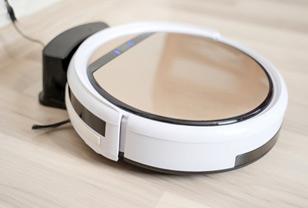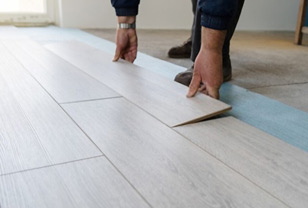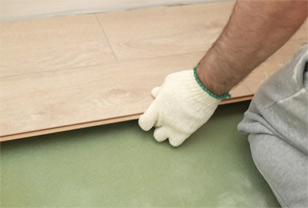How to Clean Coffee Maker - Simple and Effective Ways
- How to Use Vinegar for Household Cleaning
- How to Pressure Wash a House to Clean Siding
- 50 Cleaning Tips and Tricks - Easy Home Cleaning Tips
Are you worried about the unusual taste in your coffee? Most probably you have skipped cleaning your coffee maker several times. Built-up minerals, mold, and yeast growth have taken over. Hence the strange taste. With just white vinegar, baking soda, bleach, or lemon juice you can solve this problem. Is this the case with your coffee maker? If yes, it's because you have taken months or even longer to clean the internal parts of the coffee maker. A coffee pot left idle on the counter over a weekend is likely to have mold and yeast growing in it.
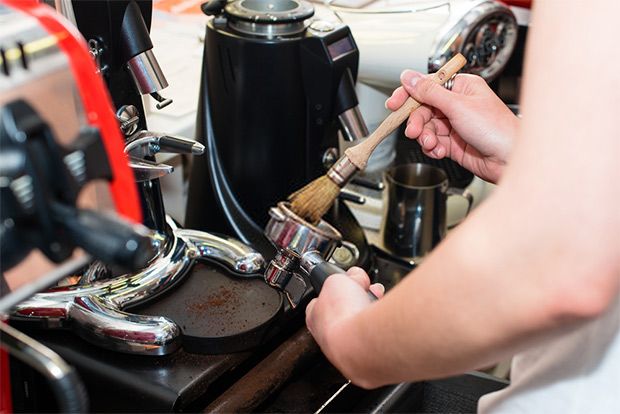
So instead of taking in caffeine, you have probably been drinking contaminated coffee every morning. The unpleasing sight in your coffee maker may even endanger your life, and here is why:
5 Reasons Why You Need to Clean Your Coffee Maker
A recent study conducted in 22 households by NSF revealed that about 50 percent of coffee makers had yeast and mold growth in their reservoir. You may not believe it. Did you know that your dirty coffee maker could be harboring more germs than even the toilet seat or bathroom door? The same study suggests that cleaning coffee maker machines regularly bestows the following benefits to you:
1. Improved coffee taste
We all know the taste of real coffee. Failure to clean the internal components of the coffee maker may change your coffee flavor and make it unpleasantly bitter. That happens due to the buildup of coffee oil in the pot. If it is safe to do so, clean the coffee maker in the dishwasher using hot soapy water and rinse thoroughly. The oddly bitter taste will then disappear.
2. Eliminate the germs residing in the moist and warm environment
Normally germs love to breed in a warm moist environment. A dirty coffee maker presents an ideal breeding ground for germs. After each brewing, remove the lid; drain the liquid that might have remained in the container. Leave the lid open and give the coffee maker time to dry out. Doing so keeps the container dry, thereby eliminating the chances of germs growing in it.
3. Maintain a healthy life
As pointed out before, coffee makers can be the breeding grounds of yeast and mold. The two substances can negatively impact lives, especially if you are asthmatic or allergic. For example, research conducted out by the NCBI shows that molds and yeast can trigger an allergic reaction or asthma. Cleaning out the two substances, therefore, reduces the chances of asthmatic attack or allergic reactions.
4. Shorter brewing time
When preparing coffee using hard water regularly, calcium deposits bit by bit in the brewing pot. In the end, it provides a kind of insulation. Consequently, the buildup calcium deposits increase the brewing time. A thorough monthly cleaning (as we’ll be discussing later in the article) removes the insulation thus reducing the brewing time.
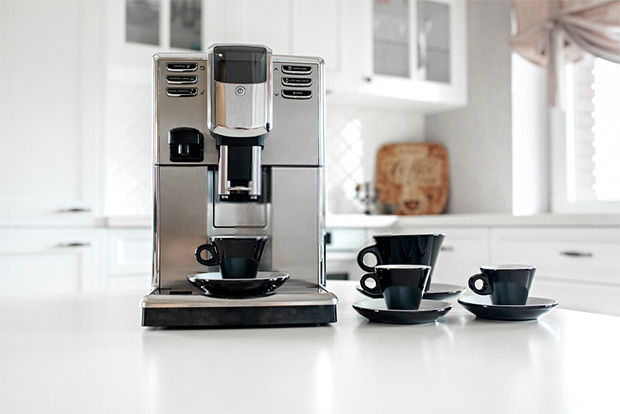
5. Maintain an appealing look
When you have old coffee remains, mixed up with mold growth in the coffee maker, it takes on a disgusting look. Cleaning and scouring such a pot remove all the brown/dark residue to give it the new, appealing appearance.
In addition to the dangers described above, the higher accumulation of mold and yeast in the coffee maker endangers even your infant’s life. For example, according to the National Center for Biotechnology Information, there is a link between kidney disease and exposure to mold (mycotoxins). Therefore, it is important to learn how to clean a coffee maker.
Various Ways to Clean a Coffee Maker
But the good news is you can remove all traces of coffee, the built-up stains, mold and yeast by yourself. Cleaning a coffee maker doesn’t have to be a daunting and expensive task.
There are very many easy-to-get cleaning detergents at home. And the few that aren’t available at home can be bought cheaply. For example, you can get a clean coffee maker with vinegar, lemon juice or even baking soda as your major detergent.
There are many ways on how to clean a coffee maker. That includes the use of the following:
- Vinegar
- Baking soda
- Ice and salt
- Lemon juice
- Bleach
Surely you can get any of the above substances right at home; most of them are useful in cleaning other kitchen accessories and utensils. Below are the exact steps to follow:
Steps to cleaning a coffee maker:
Well if you don’t have the time to go through all the 5 methods of cleaning a coffee maker then the following video clip (less than 2 minutes watch) will summarize the processes for you:
Otherwise, here is the detailed step by step guide for each method:
Method 1 – using vinegar to clean a coffee maker
Vinegar is an effective coffee maker cleaner. But do you know how to clean a coffee maker with vinegar as the key detergent? It works by first dissolving mold and other stuck minerals. The dissolved substances are then easy to rinse and remove. The method described here is ideal for traditional coffee makers. It also works well for the single-cup coffee makers that use pods.
➜ RELATED: Diy Cleaning With Vinegar: Household Uses for Vinegar
Do you find it hard finding how to clean coffee maker Cuisinart? Then use vinegar in the proportion and procedure described below.
If you mainly use hard water, then you will need to repeat this cleaning procedure every week. Otherwise, for those who use soft water, monthly cleaning is recommended.
Here are the materials you’ll need and how to clean a coffee maker with vinegar:
Tools and materials needed
- 1 cup full of distilled vinegar
- 1 cup of clean water
- Damp microfiber cloth
- One empty coffee cup; in case you own a single-cup model
- Paper filter
- Empty container
Steps
1. Before you begin the cleaning process, take out any old filters or pods like the one shown below. In addition, empty the reservoir.

2. Using the microfiber cloth, wipe clean the coffee maker’s outside surface. Go ahead and take out any removable parts and clean them too.
3. Position correctly the coffee mug or coffee pot.
4. Take one cup of water and mix it with a cup of vinegar. Mix them thoroughly in a separate large container.
5. Pour in the resulting mixture into the equipment’s reservoir. The concoction helps to loosen mold, bacteria and other coffee residual build up in the machine. Next, arrange the paper filter in the coffee maker’s empty basket.
6. Turn on the equipment to run the brew cycle, until it is half empty. As the brewing process goes on, the white vinegar goes through the coffee machine's interior parts. That’s why cleaning coffee maker with white vinegar is so effective.
7. Switch off the coffee maker. Then allow the equipment to sit for about 30 minutes. Finally, finish off the brewing cycle.
8. Empty the water/vinegar mixture in the pot.
9. Put back a fresh filter paper and brew a full cycle of freshwater. That helps to remove the vinegar left over in the machine. Repeat the cycle once or twice to get a clean coffee maker vinegar free outcome.
10. Finally, wipe off the outer surface of the machine to remove water droplets using the microfiber cloth.
Here is a quick video on how to go about the process:
When you follow the above steps to the end you get the following:
- A visually appealing coffee maker
- Germ-free coffee machine
- A superior taste to your coffee
As a coffee addict, what more could you ask for?
The remaining step is cleaning a coffee pot. That doesn’t have to be too much of a challenge.
Helpful tips on how to clean a coffee pot
After cleaning the coffee maker, you should then follow how to clean coffee pot procedures. When compared to cleaning a coffee maker, cleaning a coffee pot is easier. This is because the vinegar and water mixture has been dripping from the coffee maker into the pot. Leave the mixture in the pot to cool off. The vinegar will help to descale the coffee maker.
Do likewise with the rinsing water during the rinse cycle in the above brewing cycle. Once the water has completely cooled, then empty the container and wash in the ordinary way.
Alternatively, you can pour in some warm frothy water and rice into the pot. The rice will serve as an abrasive. Then swirl the mixture for a while in the pot. Finally, use a scrubbing sponge to remove the remaining gunk.
Method 2: using lemon juice to clean coffee makers
Alternatively, if you don’t like the smell of vinegar then, then you can do without vinegar. Here is another coffee maker cleaner tip; use lemon juice. Like vinegar, it also effectively loosens the buildup of dirt as well as eliminates nasty smells from the coffee maker. You can either buy the commercially packaged lemon juice or cut lemon fruit into halves and squeeze out the juice.

Do you own any of the following drip coffee makers?

Are you wondering how to clean a drip coffee maker without vinegar? Stick to this method:
What you need
- 1 cup of clean water
- 1 cup of lemon juice
- Mixing jug
Steps
1. Pour clean water into the reservoir and run a brew cycle as usual. That should remove any coffee remains from the machine's system.
2. Switch off the machine and dump out the liquid.
3. Next, mix 1 part of lemon juice to the other part of water into the mixing jug.
4. Pour the lemon juice mixture into the reservoir. Then let it settle there for around 15 minutes to loosen and remove the coffee oils.
5. Power on the coffee maker and run a complete brew cycle.
6. When the cycle is complete, switch it off and discard the lemon solution.
7. Finally, remove the lemon juice traces and smell from the coffee maker by running several brewing cycles using clean water only.
Method 3: using baking soda
Even if you can’t get lemon juice, you can still clean your coffee machine with baking soda. This substance is a natural cleaning detergent which is also non-hazardous. It forms a good cleaning agent in a coffee maker owing to its slight alkalinity. Consequently, its effective in washing away grease, mold and smelly coffee residue.
What you need
- 1 cup of lukewarm water
- A coffee pot
- ¼ cup baking soda
- Stirring rod
Steps
1. First, take the filter out of the coffee maker and lay it aside.
2. Transfer the one cup of lukewarm water into the coffee carafe.
3. Add the ¼ cup of baking soda in the same pot containing the lukewarm water then stir. Stirring assists the baking soda particles to dissolve quickly.
4. Pour the baking soda/water solution into the reservoir. Then restore the empty coffee pot to its right place.
5. Switch on the machine and run the complete brew cycle. The baking soda solution will travel all the way back into the coffee pot. By so doing it cleans out the coffee maker's internal system.
6. Discard the dirty baking soda solution from the coffee pot. And return the pot to its place. Fill the reservoir with fresh clean water and run the brew cycle once more. Doing so rinses the baking soda traces and other loosened dirt from the machine.
7. Repeat the brewing cycle with fresh water only till it comes out clean.
Method 4: using bleach
You can also clean your automatic coffee maker with bleach. However, it is important to point out that it is highly corrosive. Consequently, you should neither add bleach directly into a coffee maker nor use it in excess. Otherwise, it will surely corrode and damage the coffee machine. Just a few drops of bleach into the cleaning water are enough to remove the build-up stains and gunk.
What you need
- Filter paper
- 2 tablespoons of bleach
- Cleaning water
- Mixing jug
- Stirring rod
Steps to follow
1. Measure 4 cups of clean water and transfer into the mixing container.
2. Add 2 tablespoons of bleach into the same water and stir to mix.
3. Position the filter paper correctly into the coffee maker.
4. Pour in the bleach solution into the reservoir and top up with more water.
5. Plug in the machine and run the brew cycle for a few minutes.
6. Switch off the coffee maker.
7. Discard the dirty water.
8. Add plain clean water to the reservoir and run the brew cycle several times to rinse the bleach traces out of the machine's system.
9. Discard the rinsing water out of the coffee pot and let it dry.
Do this once a month and you will have a clean coffee maker!
Method 5: using ice and salt
So far, we have described how to clean the coffee maker machine using various methods. What if you have a narrow-mouthed coffee pot which has not been washed for weeks? For instance, consider the coffee carafe shown below:
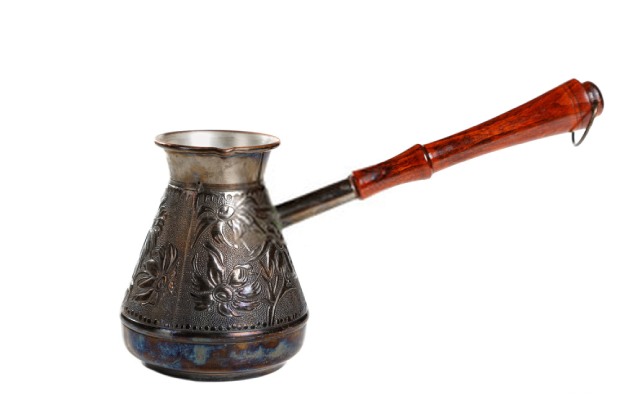
Cleaning stubborn stains from such a narrow-mouthed coffee carafe could be challenging; that’s why we recommend the combination of ice and salt. Here is how to clean coffee pots with a narrow mouth.
What you need
- 1 cup of cold water
- 1 ½ cups of crushed ice
- 4 tablespoons of salt
- A lemon portioned into quarters
Steps
1. First, let the coffee pot cool down especially if it is a glass carafe. Sudden cooling of hot glass by adding cold water may shatter it.
2. Squeeze out the juice from the lemon quarters into the coffee pot. Drop the squeezed-out rinds into the pot as well.
3. Pour the crushed ice, salt and water into the pot.
4. Hold the pot securely by the handle and swirl in a clockwise direction for about 15 seconds.
5. Next swirl the mixture in an anticlockwise direction.
6. Repeat several times until the stains are removed. If there are still stubborn stains at the bottom, let the mixture stand overnight.
7. Finally, dump the whole mixture. Rinse the pot thoroughly with COLD water.
Using the above method, you shouldn’t experience difficulty in cleaning even the most stubborn grease and built-up mineral salts from your coffee carafe.
Author’s recommendation
You don’t have to wait until mineral deposits accumulate in the coffee maker. Clean your coffee machine on a regular basis. For example, use lukewarm soapy water and a sponge to clean your coffee pot daily. If a sponge can’t fit in the carafe then add a little rice into the container and swirl.
On a monthly basis, descale the coffee maker using any of the above methods. Alternatively, do the cleaning as often as necessary; some coffee makers will even give you a warning indicating when there is excess mineral accumulation.
Conclusion
Failing to clean your coffee maker is a risk to your health. Moreover, you have no reason for failing to do so. The above detergents can easily be obtained at home. From vinegar, lemon juice, baking soda or bleach, you get all of them from your kitchen cupboard. Happy cleaning!





